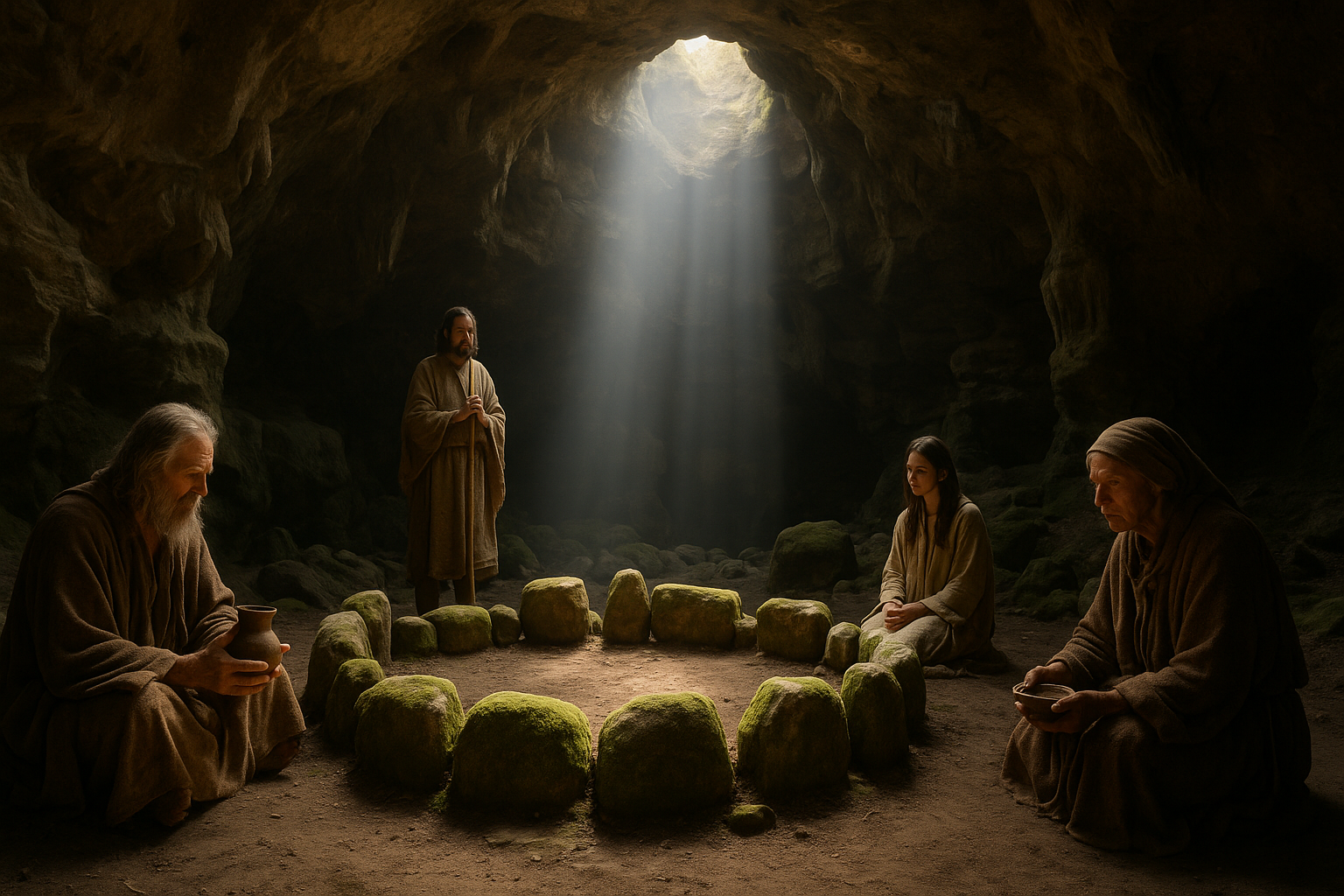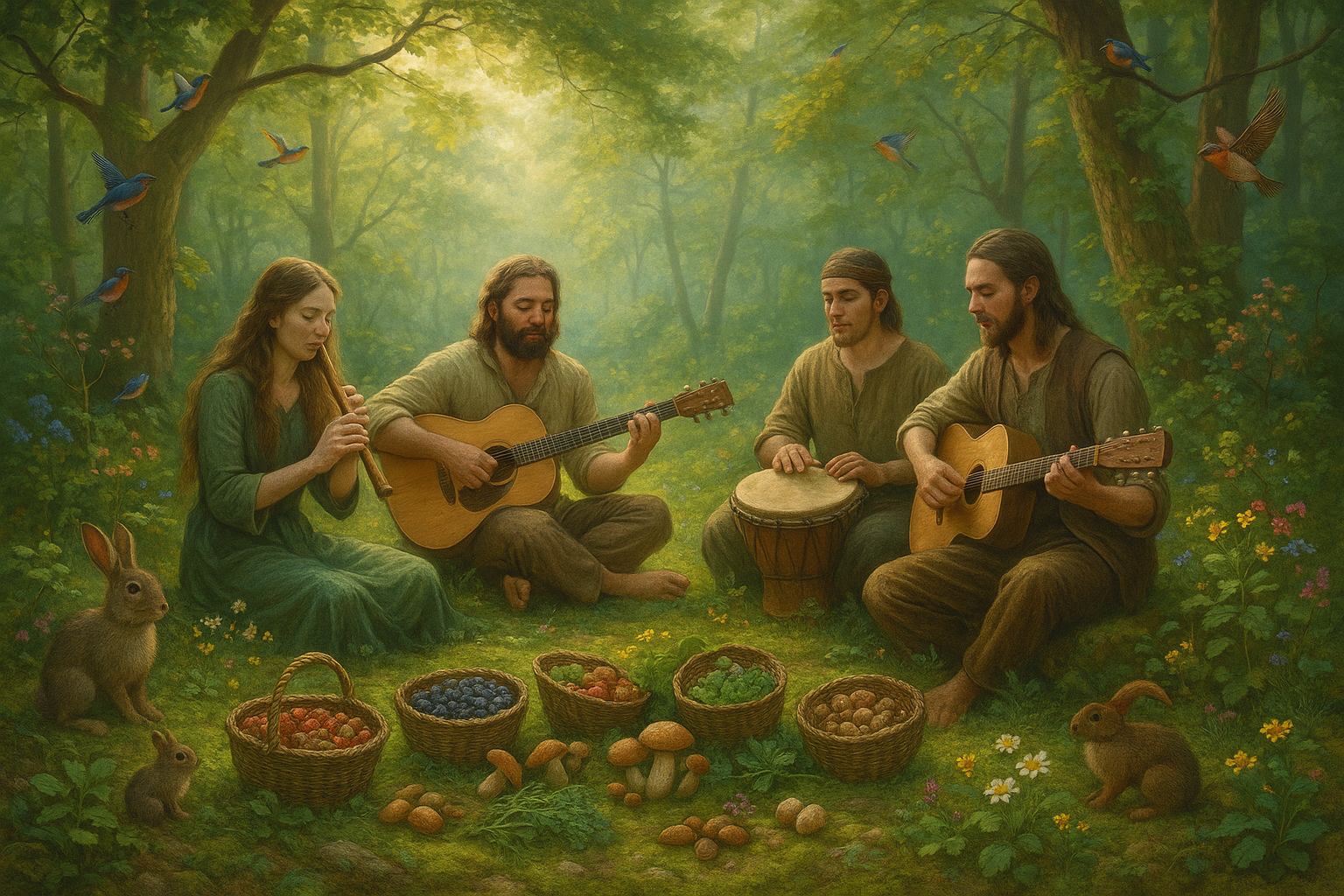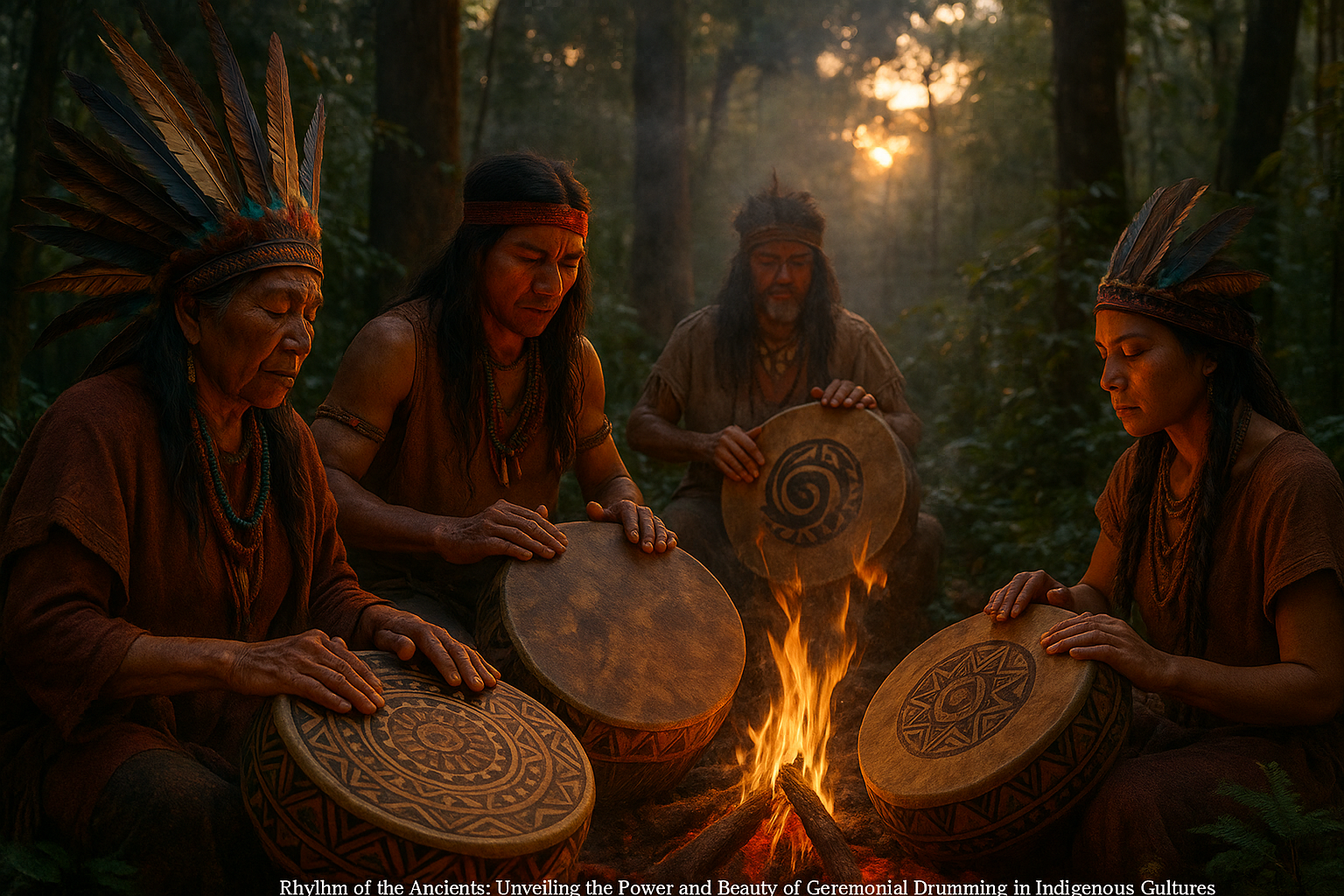In the hushed whispers of the world’s densest jungles, an untapped symphony awaits. Imagine standing amidst towering trees, enveloped by the vibrant tapestry of life that is a rainforest. Here, the air is thick with the scent of earth and foliage, and the soundscape is as rich and intricate as the ecosystem itself. Each rustle of leaves, each distant call of an exotic bird, and the gentle hum of insects contribute to a complex auditory ecosystem that scientists and adventurers are only beginning to decode. Welcome to the mesmerizing world of rainforest sound mapping, a field that not only enhances our understanding of these critical environments but also brings us closer to the harmonious chorus of nature itself. 🌿
Rainforests are often referred to as the lungs of our planet, teeming with life and home to countless species that remain undiscovered. Yet, beyond their biological importance, these lush environments offer an acoustic wonderland that is equally compelling. Sound mapping in rainforests is an innovative approach that captures and analyzes the myriad of sounds that compose this natural orchestra. This burgeoning field employs advanced audio technology and bioacoustic methods to record and interpret the sounds of the wild, providing insights into the health and diversity of these ecosystems. The enchanting symphony of nature serves as an auditory fingerprint, unique to each rainforest and invaluable for conservation efforts.
The journey into sound mapping begins with understanding its transformative potential. By capturing the sounds of a rainforest, researchers can monitor changes in biodiversity, track the presence of elusive species, and even detect illegal activities such as poaching or deforestation. This non-invasive method offers a continuous stream of data, painting a dynamic picture of life in these dense forests. Moreover, sound mapping transcends the limitations of visual observation, allowing scientists to study nocturnal creatures and those hidden within the forest’s dense canopy. As we delve deeper into this article, we will explore how these sonic insights are revolutionizing conservation strategies and reshaping our relationship with the natural world.
Beyond its scientific applications, rainforest sound mapping invites us to appreciate the aesthetic beauty of natural soundscapes. Just as a symphony evokes emotion and tells a story, the sounds of a rainforest weave a narrative of life, adaptation, and survival. Listening to these recordings can transport us to distant lands, offering a meditative escape from our modern, fast-paced lives. In this article, we will journey through the auditory landscapes of some of the world’s most iconic rainforests, uncovering the stories told by their unique sound signatures. Through the lens of sound, we will experience the majesty of these environments in a profoundly intimate way.
As we embark on this exploration of rainforest sound mapping, prepare to be enchanted by the subtle nuances and powerful messages embedded within nature’s own music. From the technological innovations that make this research possible to the profound ecological and cultural implications of these discoveries, this article will guide you through the captivating world of sound mapping. By the end of our journey, you will have gained a deeper appreciation for the complexity and beauty of rainforest ecosystems and the vital role that sound plays in their preservation. Let the symphony of the rainforest unfold before you, revealing secrets that have long been hidden beneath the canopy. 🌍🎶
The Enchanting World of Rainforest Sound Mapping
Imagine stepping into the lush, green embrace of a rainforest. The vibrant tapestry of life is not just seen but heard. Each rustle of leaves, every call of a bird, and the distant rumble of thunder contributes to an ever-evolving symphony. Rainforest sound mapping is a fascinating discipline that captures and studies these natural soundscapes to unravel the mysteries of these dense ecosystems. This article explores the techniques, benefits, and the captivating sounds that make up the rainforest’s sonic environment.
Rainforests cover approximately 6% of Earth’s surface yet harbor more than half of the world’s plant and animal species. This incredible biodiversity is reflected in the sounds that emanate from these environments. From the rhythmic chants of frogs to the cacophony of insects, each sound tells a story. Sound mapping involves recording and analyzing these sounds to create an acoustic fingerprint of the environment. This innovative approach is not just about collecting data but immersing oneself in the complex layers of life that thrive in the rainforest.
To fully appreciate the nuances of rainforest sound mapping, it’s essential to understand the equipment and techniques used in the field. Researchers deploy an array of sophisticated tools, including high-quality microphones and portable recording devices, to capture the delicate sounds of the forest. These recordings are often visualized through spectrograms, which represent the frequency, intensity, and duration of sounds over time. By analyzing these visual representations, scientists can identify species, monitor biodiversity, and even detect changes in the ecosystem due to human activities.
Unveiling the Secrets Through Sound
Sound mapping in rainforests is not merely an academic exercise. It plays a crucial role in conservation efforts by providing valuable insights into the health and dynamics of these ecosystems. By capturing baseline data on the acoustic environment, scientists can detect shifts that may indicate environmental stressors such as deforestation, climate change, or the introduction of invasive species. This proactive approach allows for timely interventions to protect the delicate balance of life in the rainforest.
Moreover, sound mapping offers a unique non-invasive method to study wildlife. Traditional methods like visual surveys can be challenging in dense forests, where visibility is limited. Acoustic monitoring overcomes these obstacles, enabling researchers to study elusive or nocturnal species that are otherwise difficult to observe. This method also allows for continuous monitoring, providing a comprehensive understanding of the biodiversity and behavior of forest inhabitants.
For those passionate about conserving our planet’s natural heritage, the potential applications of rainforest sound mapping are inspiring. Imagine developing a real-time acoustic monitoring system that alerts conservationists to illegal logging activities or helps indigenous communities safeguard their territories. The possibilities are endless, and the data collected serves as an invaluable tool in the global effort to preserve rainforests for future generations.
The Soundscape: A Melodic Journey
The soundscape of a rainforest is a rich tapestry of overlapping sounds that create an immersive auditory experience. Each layer of the forest, from the forest floor to the canopy, contributes distinct sounds that together form a complex and dynamic symphony. These sounds are not just random noises but are carefully orchestrated by nature to fulfill various ecological functions.
The ground level of the rainforest is a world of its own. Here, the constant rustling of leaves and twigs underfoot is punctuated by the calls of ground-dwelling animals like peccaries and agoutis. In the undergrowth, the rhythmic chants of frogs and the persistent hum of insects add to the ambient sounds, creating a steady, soothing background melody.
As we ascend to the mid-story, the soundscape becomes more vibrant and varied. The calls of birds echo through the trees, each species with its unique song. Some birds use their calls to communicate, establish territories, or attract mates, while others mimic the sounds of their surroundings. The mid-story is also home to many mammals, including monkeys, whose vocalizations add an element of spontaneity and excitement to the forest’s audio landscape.
Exploring the Canopy: The Upper Symphony
In the canopy, the sounds become more intense and pronounced. This upper layer of the forest is bathed in sunlight, creating a unique environment for a variety of species. Here, the screeches of parrots and the chatter of toucans dominate the soundscape. These birds often form mixed-species flocks, moving through the treetops in search of food. Their vibrant calls serve as an auditory beacon, guiding the flock through the dense foliage.
The canopy is also home to arboreal mammals such as sloths and howler monkeys. The latter are particularly known for their loud, guttural calls that can be heard up to three miles away. These vocalizations are used to communicate with other groups, warn of predators, or assert dominance over a territory. The interplay of these sounds creates a dynamic, ever-changing environment that reflects the diverse interactions occurring in the canopy.
Rainforest sound mapping is an invitation to tune into the subtle and powerful symphony of nature. It’s a reminder that these ecosystems are alive with communication, competition, and collaboration. For those interested in experiencing this auditory wonder firsthand, several projects have made their recordings available online, allowing anyone with an internet connection to immerse themselves in the rainforest’s vibrant soundscape.
Table: Tools and Techniques for Rainforest Sound Mapping
| Tool/Technique | Description | Purpose |
|---|---|---|
| Microphones | High-sensitivity devices used to capture a wide range of frequencies. | Recording natural sounds with precision. |
| Recording Devices | Portable equipment used to store sound recordings in various formats. | Facilitating fieldwork by storing large amounts of audio data. |
| Spectrograms | Visual representations of sound frequencies over time. | Analyzing and identifying species and ecosystem changes. |
| Acoustic Monitoring Systems | Automated systems that continuously record and analyze sounds. | Long-term monitoring and real-time data collection. |
To further explore the world of rainforest sound mapping, watch the following video: “The Sounds of the Amazon Rainforest” by Nature Sounds. 🎶 Dive into the heart of the rainforest and experience the vibrant audio landscape that these diverse ecosystems have to offer.
Innovative Applications and Future Directions
Rainforest sound mapping is a burgeoning field with exciting potential applications that extend beyond ecological research. One of the most promising areas is its use in education and public engagement. By making these soundscapes accessible to a broader audience, educators can inspire a new generation of environmental stewards. Interactive exhibits in museums or virtual reality experiences can transport people to the heart of the rainforest, fostering a deeper appreciation for these vital ecosystems.
Another innovative application is in the field of bioacoustics, where researchers are developing algorithms to automatically identify species based on their vocalizations. This technology could revolutionize wildlife monitoring, allowing for real-time species identification and population assessments. Such advancements hold great promise for conservation efforts, enabling more accurate and efficient tracking of biodiversity.
The use of sound mapping data in the legal realm is also gaining traction. Acoustic evidence is increasingly being used in court cases to combat illegal logging and poaching. By providing concrete data on the presence and activities of humans in protected areas, sound mapping can strengthen the enforcement of environmental laws and support the prosecution of offenders. This application highlights the role of technology in the fight against environmental crimes.
List of Future Directions
- Development of real-time monitoring systems for conservation purposes.
- Integration with virtual reality for immersive educational experiences.
- Advancements in species identification algorithms for bioacoustic research.
- Increased use of acoustic data in legal proceedings for environmental protection.
- Expansion of public engagement initiatives to raise awareness of rainforest conservation.
In conclusion, the exploration of rainforest sound mapping opens a new chapter in our understanding of the natural world, allowing us to engage with nature in a profoundly immersive way. This endeavor not only enriches our appreciation for the intricate tapestry of life within rainforests but also provides invaluable insights into biodiversity, ecosystem health, and the impact of human activities on these vital ecosystems.
Throughout the article, we have journeyed through the lush landscapes of rainforests, discovering how sound mapping serves as a bridge between human perception and the vibrant orchestra of nature. We examined the technological advancements that have made it possible to capture and analyze the symphony of sounds that fill these ecosystems, from the calls of exotic birds to the rustle of leaves in the wind. These auditory landscapes offer a unique perspective on the complex interactions and interdependencies among species, which are often invisible to the naked eye.
The importance of rainforest sound mapping cannot be overstated. In a time when biodiversity is under threat from deforestation, climate change, and other anthropogenic factors, sound mapping emerges as a crucial tool for conservationists and researchers. By identifying changes in acoustic patterns, scientists can detect early signs of ecological shifts, assess the health of habitats, and implement timely conservation strategies. Moreover, this approach fosters a deeper connection between individuals and nature, encouraging a collective sense of responsibility towards preserving these precious environments.
As we delve into the secrets of rainforest sound mapping, it becomes evident that this practice transcends scientific inquiry, inviting us to listen, reflect, and act. By sharing these auditory experiences, we not only broaden our understanding but also inspire others to appreciate and protect the natural world. 🌿
I encourage you, dear reader, to immerse yourself in the symphony of nature. Whether it’s through participating in citizen science projects, supporting conservation efforts, or simply taking a moment to listen to the world around you, your engagement makes a difference. Share what you’ve learned with friends and family, and consider how these insights might influence your interactions with the environment. Let’s harness the power of sound to foster a more harmonious relationship with our planet. 🌍
For those interested in exploring further, numerous resources are available to deepen your understanding of rainforest sound mapping and its implications for conservation. Consider visiting the websites of organizations like the Rainforest Alliance or the Wildlife Conservation Society, which offer valuable insights and opportunities to get involved. By continuing to educate ourselves and others, we can work together to unlock the full potential of sound mapping in safeguarding the future of our rainforests.
In closing, let this exploration of rainforest sound mapping serve as a reminder of the wonders that lie within the natural world, waiting to be discovered and cherished. Together, we can ensure that the symphony of the rainforest continues to play for generations to come. 🌱
Toni Santos is a sensory storyteller and soundscape artisan whose work explores the forgotten language of the Earth through acoustic ecology storytelling. With a deep reverence for the natural world’s sonic textures, Toni crafts narratives that awaken our ears to the subtle music of forests, winds, waters, and wild silence.
His creative journey is rooted in a desire to preserve and interpret the acoustic heritage of environments, both ancient and fragile. From the echo of birdsong in a disappearing jungle to the resonance of stones in sacred landscapes, Toni’s stories reflect the memory held in sound—often overlooked, yet deeply felt.
With a background in environmental aesthetics and sonic design, Toni blends field recordings, visual symbolism, and poetic insight to create immersive experiences that honor the sonic soul of nature. His work does more than document; it invites listeners to re-tune themselves to the rhythms of life that still pulse beneath modern noise.
As the voice behind Vizovex, Toni shares sound-based studies, ambient narratives, and reflective content that help others reconnect with how sound shapes memory, meaning, and place.
His work is a tribute to:
The lost soundscapes of vanishing ecosystems
The role of natural acoustics in cultural and emotional memory
The healing potential of listening deeply to the world
Whether you’re an artist, an ecologist, or someone drawn to the quiet power of listening, Toni invites you into a space where every rustle, ripple, and resonance becomes a story—one note, one place, one heartbeat at a time.





